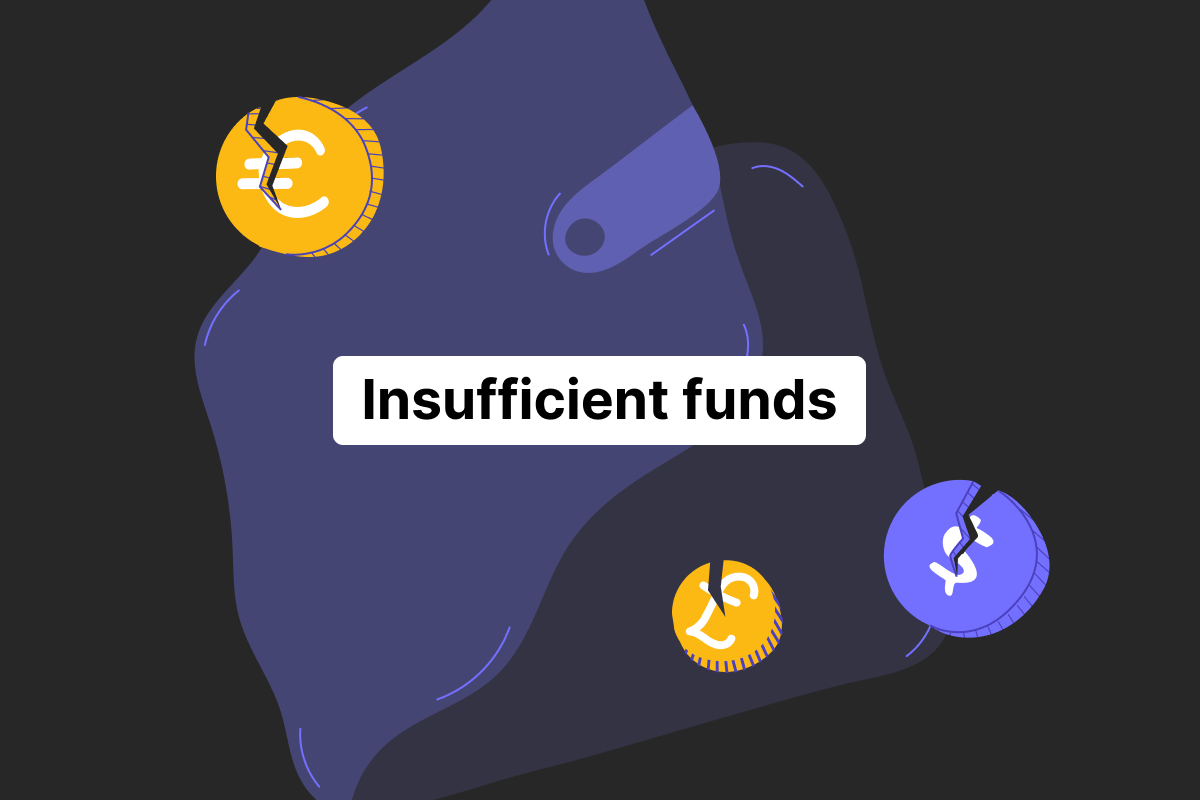The Single Euro Payments Area (SEPA) initiative was and still is an incredible solution for improving transfers within the Eurozone, allowing for safe and fast payments. If you live, work, or have a business in the EU, SEPA transfers are definitely what you need to explore.
In today’s Genome article, we explain SEPA transfers – the most common transactions abroad within the European Union. We will dive into different types of SEPA transfers and talk about the pros and cons of this pan-European network.
What is SEPA?
SEPA transfers are standardized euro payments across Europe that enable quick payments between bank accounts in the SEPA zone.
SEPA transfers are possible thanks to exchanging messages through the electronic network. That is, banks send and receive messages to move funds from one bank account to another. SEPA (Single Euro Payments Area) is one such network.
The SEPA network only supports payments in euros as it’s an official EU currency. With so many countries using EUR, processing bank payments for days would cause delays in financial and business processes. That’s why SEPA transfers were developed by the European Payment Council and introduced in 2008 to make euro payments more efficient.
Currently, 36 countries are part of a SEPA network: the UK, Switzerland, Vatican City State, Norway, San Marino, Iceland, Liechtenstein, Monaco, Andorra, and all 27 EU member states.
Key features of SEPA payments
As in the case of many transfer systems, some features define how SEPA payments function. Let’s review them.
Standardization of payment methods
All SEPA transfers use the same data necessary to make payments — the IBAN. Granted, the length of IBANs differs from country to country, but they still simplify processing, reduce errors, and make the system more user-friendly.
Such a payment method works for transfers on a recurring basis, as well as international and same-country (domestic) transfer options.
Cross-border payments
SEPA has become universal for cross-border transfers, uniting 36 countries within one efficient and secure system. It reached the goal of equating domestic transfers to cross-border ones within the SEPA area. Such transfers help promote economic integration and support the EU’s internal market.
Uniformity and security
As mentioned, SEPA uses IBANs and SWIFT codes to standardize the transaction process, which also ensures that the money reaches the right beneficiary.
SEPA transfers are regulated under EU legislation, including the Payment Services Directive (PSD2), which mandates strong customer authentication and secure communication protocols between banks.
In turn, strong customer authentication requires two-factor authentication when sending money. It means that the person needs to verify their identity during the process.
Cost-efficiency
Another benefit of SEPA comes from the cost, as the fees are usually lower than for other international transfer options.
Moreover, the fees for receiving and sending money are the same for domestic and cross-border payments within the SEPA area.
Types of SEPA payments
Currently, three types of SEPA transfers exist, serving different purposes for bank account holders.
SEPA Credit Transfer (SCT)
SEPA Credit Transfers, which are also usually just called SEPA transfers, are the most common types of SEPA payments. Over 20 billion payments are made every year with the help of this SEPA scheme, allowing for transfers to individuals and businesses.
The process of initiating a SEPA Credit Transfer is straightforward: you need the beneficiary’s full name, international bank account number (IBAN), and SWIFT code. FIll out this information and send a SEPA transfer in euros.
SEPA Credit Transfers are usually processed within one business day or on the next day if the SEPA payment was initiated near the end of the working day.
Thus, the best use cases for SEPA Credit Transfers are non-urgent, regular payments such as one–off transfers, salary payments, or inter-company transactions.
Open an account
in Genome online
SEPA Direct Debit (SDD)
A SEPA Direct Debit transfer differs a lot from other types of SEPA payments. A SEPA Direct Debit transfer allows businesses to collect money directly from a person’s bank account if the person has agreed to it beforehand.
SEPA Direct Debit payments can be initiated after the customer (payer) signs the SEPA Direct Debit transfer mandate agreement sent by the company (creditor).
The SEPA Direct Debit scheme is mainly used for recurring payments by companies that provide services monthly, quarterly, or yearly.
To better understand how SEPA Direct Debit payments work, let’s use an example:
Bob wants to access a catalog of movies and TV shows and subscribes to the “Watchdotsee” movie service. He chose a SEPA Direct Debit transfer for recurring payments.
To proceed, Bob fills out and signs a digital SEPA Direct Debit mandate form provided by the “Watchdotsee” company. This form includes his bank account details and authorizes the company to withdraw the monthly subscription fee. After this, Bob’s and the company’s banks set up the process. Bob will be notified about the upcoming money withdrawal for the subscription in advance.
On the due date, the company’s bank requests the funds from Bob’s bank account through the SEPA Direct Debit system. The payment was successful, and Bob was notified.
Two types of SEPA Direct Debit schemes exist for recurring payments:
SDD Core is available for consumers and businesses and allows refunds.
SDD B2B is available for payments between businesses and doesn’t allow refunds.
SEPA Instant Credit Transfer (SCT Inst)
The SEPA Instant Credit Transfer is similar to a regular SEPA transfer (SCT). To initiate a SEPA Instant Credit Transfer, you must also fill out the person’s name, IBAN, and BIC.
There are, however, some fundamental differences between SEPA Instant Credit Transfers and regular SEPA payments.
1. The speed. SEPA Instant Credit Transfers reach the beneficiary in less than ten seconds, while a common SEPA Credit Transfer is usually executed within a business day.
2. The amount of money you can send. The default scheme maximum amount per one SEPA Instant Credit Transfer is 100,000 euros, while a SEPA Credit Transfer doesn’t have a limit.
3. Execution days. The SEPA Instant Credit Transfers are available 24/7, even on weekends and holidays, while regular SEPA bank transfers are executed during business days.
Additionally, while a SEPA Instant Credit Transfer is certainly more beneficial in execution time and speed than a regular one, not all financial institutions have this feature. However, the European Union adopted a new regulation that will soon enable access to SEPA Instant Transfers for all SEPA countries.
However, if you want to try SEPA Instant payments now, you don’t have to wait – as Genome has already enabled instant payments for all its clients. Use them for quick payments, one-off transfers, and business transactions.
Benefits of SEPA payments
The use of the SEPA network is advantageous for many reasons. Let’s list some of the main ones.
Fast and efficient
Regular SEPA bank transfers take just one business day to reach the beneficiary. SEPA Instant Credit Transfers are even better, allowing you to save time and send funds within seconds, and are available 24/7.
Reduced costs
SEPA bank transfers are likely your best bet if you need cross-border euro payments. That’s because financial institutions charge the same fees for domestic and cross-border payments, which are generally lower than those for non-SEPA international payments.
Enhanced security
SEPA bank transfers are heavily regulated to enhance the security and reliability of cross-border and domestic transfers. Compliance with the European Payment Council standards ensures that all participating institutions maintain strict security measures.
Improved cash flow management
SEPA transfer schemes are faster than other international payment methods, with execution time frames that are much easier to predict. This simplifies cash flow management a lot, as you better understand when you or a beneficiary will approximately receive SEPA payments.
Facilitates cross-border transactions
The format and processing are unified for SEPA transfers, allowing for more straightforward financial operations. This uniform approach not only enhances simplicity but also supports the financial integration of the European market.
Consequently, businesses find it easier to expand across borders, while individuals can send funds to friends and relatives across the EU.
How to make a SEPA payment
The process of making a SEPA transfer is very straightforward. Let’s use Genome as an example, as we offer both Credit and Instant SEPA payments.
Here’s how to send a SEPA transfer inside Genome:
1. Open the Genome app or Genome’s website;
2. Go to the Transfers menu;
3. Select the Bank transfer option;
4. Choose the EUR account from which you want to send the money;
5. Fill out the beneficiary’s details: name, IBAN, and BIC.
6. Enter the amount you want to send and a payment description;
7. Check all the details and send your money transfer.
The process will be similar if you have a bank account with other payment service providers.
Also, to receive SEPA payments to your bank account, you will need to send your IBAN and BIC bank account details. With Genome, doing so will take you just a few clicks:
1. Open the Genome dashboard;
2. Select one of your EUR accounts;
3. Go to the account details tab and copy the necessary information.
Need a little more than SEPA transfers for your business? No problem – Genome provides international transfers for businesses, including SWIFT, Faster Payments, CHAPS, and other transfer options!
Use the most convenient way to send money and store funds in different currencies – EUR, USD, and GBP. Open additional multi-currency accounts inside Genome in seconds!
Open an account
in Genome online
Conclusion
All-in-all, it is hard to deny that SEPA bank payments take the crown when it comes to fast, cost-effective, and safe payments for bank account holders inside the EU.
These benefits make SEPA an invaluable framework for individuals and businesses alike, promoting a seamless financial environment and facilitating the smooth flow of capital.
FAQs
What is the difference between SEPA Credit Transfer and SEPA Instant Credit Transfer?
There are three main differences between these two bank transfer types. The regular SEPA transfer is processed only during weekdays, while instant payments are processed 24/7. It takes seconds to receive payments via the SEPA Instant transfer scheme, while regular SEPA transfers will take a business day to reach the beneficiary. Lastly, there’s a 100,00 euro limit on how much you can send using instant SEPA bank transfers.
How long does a SEPA payment take to process?
The processing time depends on the type of SEPA scheme you use. The SEPA Credit Transfer is usually processed within 1 business day, while an instant SEPA bank transfer is processed within seconds.
Are there any fees associated with SEPA payments?
Yes, there are fees for using a SEPA scheme, but they are generally lower than those for non-SEPA international transfers.
Is SEPA available for non-Euro currencies?
The SEPA scheme is a payment method specifically designed for transactions in euros in the SEPA region and does not support other currencies directly. Currently, SEPA countries include all 27 EU member states: the UK, Switzerland, Vatican City State, Norway, San Marino, Iceland, Liechtenstein, Monaco, and Andorra.






